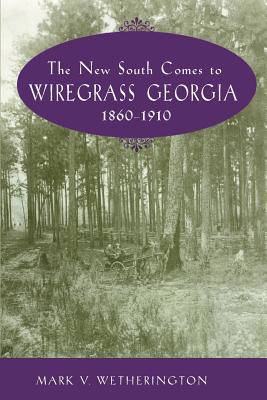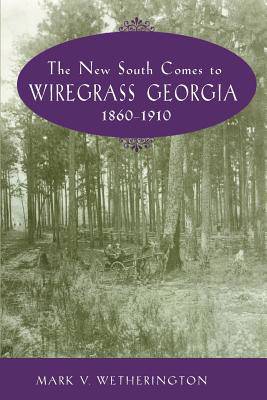
- Afhalen na 1 uur in een winkel met voorraad
- Gratis thuislevering in België vanaf € 30
- Ruim aanbod met 7 miljoen producten
- Afhalen na 1 uur in een winkel met voorraad
- Gratis thuislevering in België vanaf € 30
- Ruim aanbod met 7 miljoen producten
Omschrijving
This first book-length examination of the Georgia Pine Belt challenges the conventional view of this area as an unchanging economic backwater by examining its postbellum evolution from an independent agricultural economy to one entirely dependent upon a single unstable crop: cotton. Before the Civil War, the Georgia Piney Woods region easily supported a population of mostly self-sufficient yeomen and livestock herders. After the war, a variety of external forces invaded the region, propelling the economy through three stages of social, political, and economic change that permanently altered the landscape. Spearheaded by New South boosters like Henry Grady, these invasions were intended to create a South with a diversified economic future bright with industry and self-sufficient agriculture.
The first stage did see economic advancement in the form of transportation routes, including railroads, that opened up the Pine Belt's forests to the second stage of change: industrialized sawmilling and turpentining. This second stage created new jobs, but failed to bring in other industries, leaving the area dependent upon an industry that destroyed the antebellum open-range herding system and brought deforestation within a generation.
The lumber industry's demise led to the final stage of change, which saw New South boosters, in an attempt to curtail the economic malaise, promoting the deforested lands to a wave of newcomers--immigrant cotton farmers from the upcountry, hungry for new lands. With no other industries to compete with them, cotton farmers came to dominate the area's economic life even more than before the Civil War. By 1910, few Georgia pinelanders doubted that a New South had arrived, but it was not the diversified landscape that Henry Grady and others had originally envisioned. It was, instead, a land of cotton much like the one that had come to dominate life across the rest of the Pine Belt from Virginia to East Texas.
Mark V. Wetherington's in-depth study of this region sheds new light on its socioeconomic history and encourages a closer examination of the often ignored histories of other areas.
Specificaties
Betrokkenen
- Auteur(s):
- Uitgeverij:
Inhoud
- Aantal bladzijden:
- 416
- Taal:
- Engels
Eigenschappen
- Productcode (EAN):
- 9781572331686
- Verschijningsdatum:
- 1/05/2002
- Uitvoering:
- Paperback
- Formaat:
- Trade paperback (VS)
- Afmetingen:
- 151 mm x 225 mm
- Gewicht:
- 671 g

Alleen bij Standaard Boekhandel
Beoordelingen
We publiceren alleen reviews die voldoen aan de voorwaarden voor reviews. Bekijk onze voorwaarden voor reviews.











